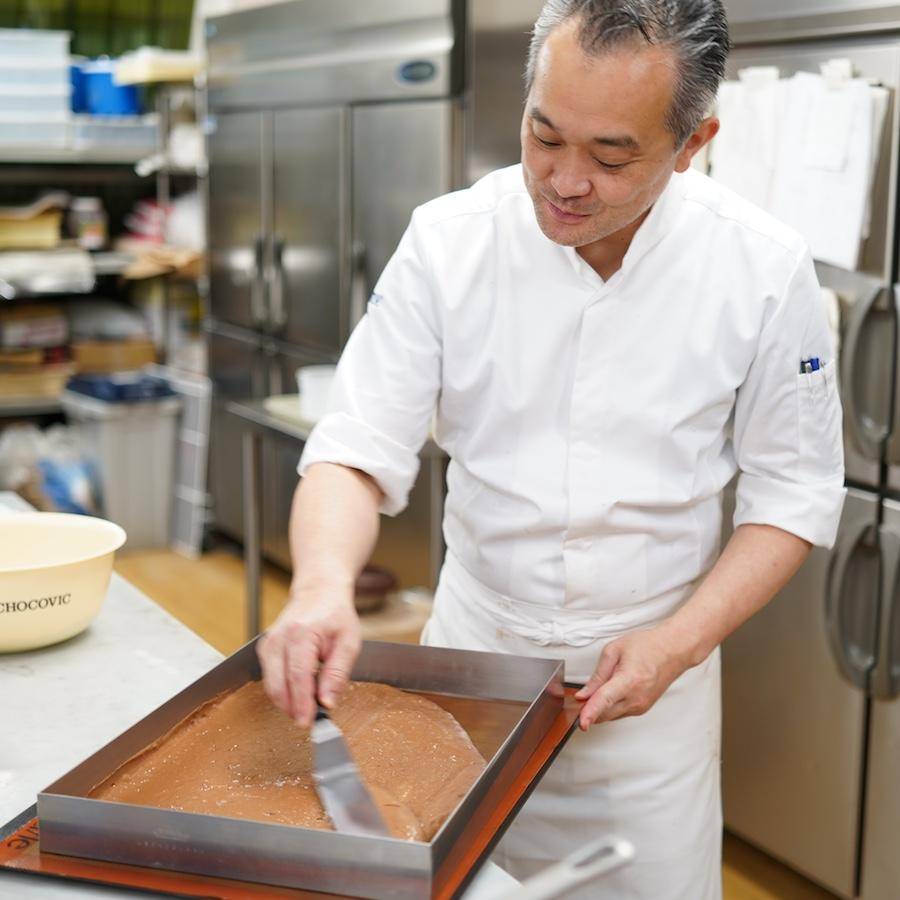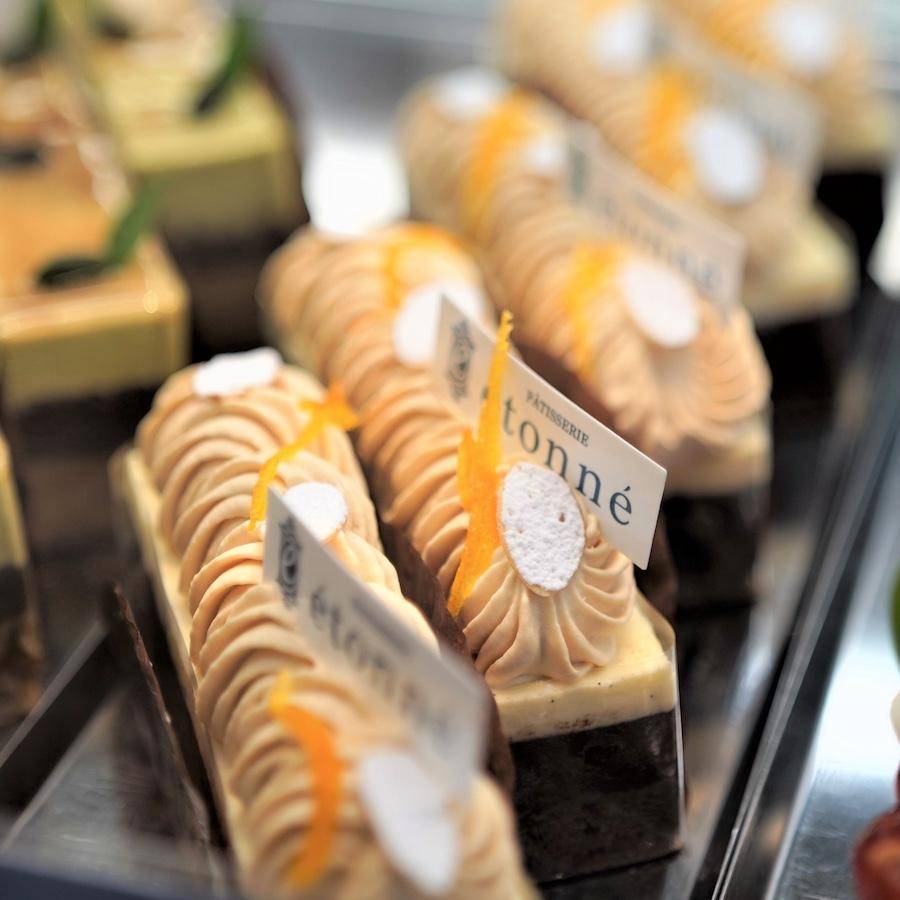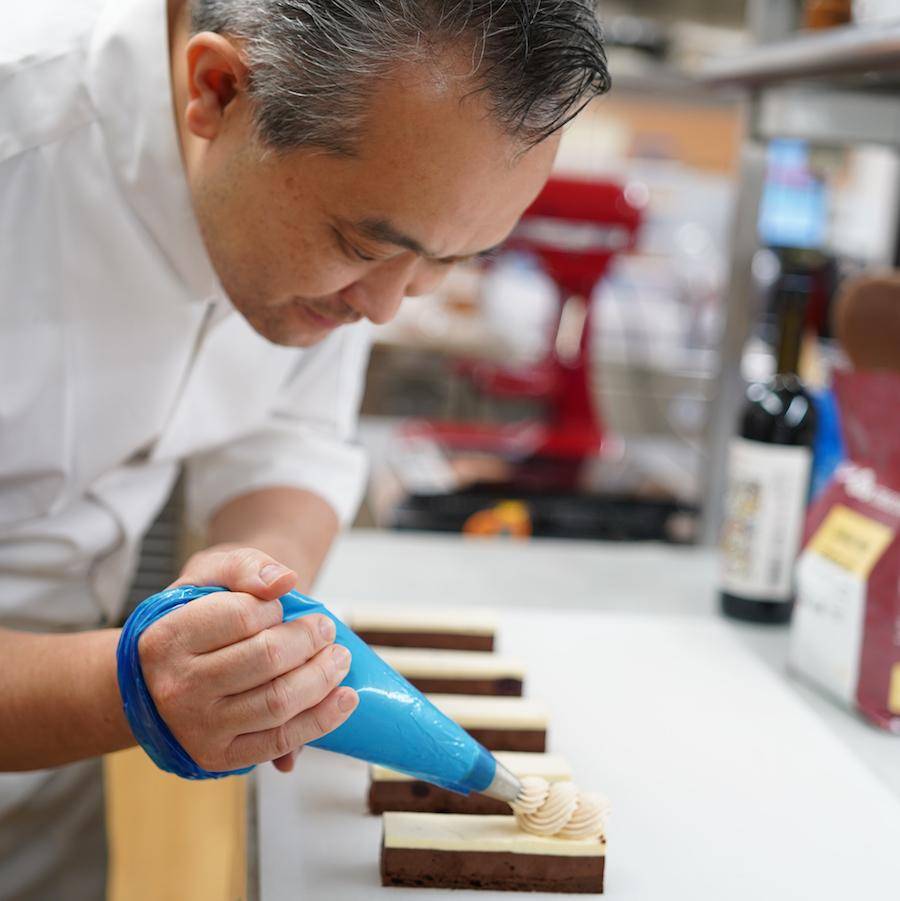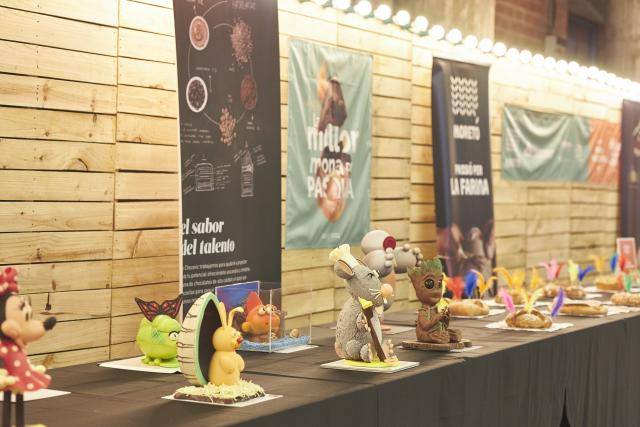Seiji Tada:
Chef Étonné Pastisserie

Seiji Tada:
Chef Étonné Pastisserie
How did you get your vocation Seiji?
I've liked making sweet things ever since I was a child. I think it's partly down to my father, who loved cooking. When I was in third year primary I decided to become a pastry chef. To learn all the skills I needed to become one, I wanted to work in a hotel where I could experience a wide range of work, from chocolate through to desserts and ice creams, so I began my career at Hotel Hankyu International.
When we see your preparations, we recognise an individual style straight away. How would you describe that style?
I try to make cakes that are simple and easy to eat using the traditional French patisserie techniques I've learned up to now.
You worked for two years in Lyon and in Paris. Did that experience influence the way you work?
I learned to think rationally about the process of making confectionery. In Japan, the excessive hygiene in food preparation means there's a lot of unnecessary work. For example, in France, after baking a sponge cake, you pour the ganache on the tray, but in Japan you have to move it onto another tray before going on to the next step (he laughs).
Are the tastes of Japanese and European consumers very different?
Compared to Europe, Japanese customers tend to prefer sweets with a smoother texture. They're also very keen on appearance, so we have to be creative with the decoration.
In your opinion, who are the best pastry chefs in Japanese patisserie?
I have great respect for Chef Tetsuya Nakatani at Nakatanitei. I think he has the rare talent of being able to create sweets without being tied to a series of rules and and using only his imagination.

I try to make cakes that are simple and easy to eat using the traditional French patisserie techniques I've learned up to now.

In 2004 you set up your own business, Étonné Pastisserie; what kind of creations can we find there? What's your speciality?
At Étonné, we do our best to create sweets composed of three elements. We don't set out to produce sweets with a complex structure, instead we do our best to make sweets that leave things out to allow the flavour of the individual ingredients to really come through. The speciality is our freshly made chocolate cakes. When I make chocolate mousse, I don't use eggs to highlight the flavour of the chocolate.
A few years back, after you visited Barcelona, you made a preparation dedicated to the Rambla. What does it consist of and what inspired you?
The first thing I wanted to do was to capture the linear beauty of the Ramblas boulevard. So I tried to use Spanish ingredients in the composition, like chocolate, cherries, oranges and Sherry.
You tend to use Chocovic products in your creations. What do you value the most about our brand and our products?
Compared to other brands, it has a better balance of sweetness. This makes it easier to achieve a balance when the ingredients are mixed, which is one of the advantages of using Chocovic chocolate.
Which Chocovic couvertures or products do you most like working with?
My favourites are the Tobado, Jade, Zeylon, Opal and Napal couvertures. Zeylon especially, it's a really useful milk chocolate that you can use as a secret ingredient in loads of different ways.
Compared to Europe, Japanese customers tend to prefer sweets with a smoother texture.
Lastly, if we visit Ashiya and pop into Étonné Pastisserie, which product should we try without fail?
The matcha and Napal cake. It's a simple cake made with matcha and white chocolate, but it's baked together with hot water so it adapts to suit the Japanese taste, as they prefer a soft texture.




